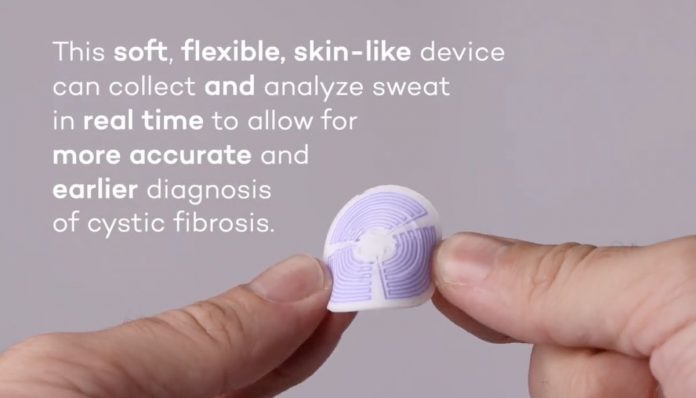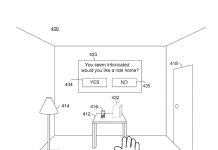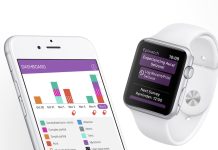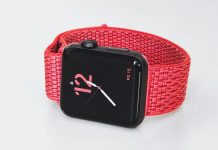Researchers at Northwestern University have found a unique way to detect cystic fibrosis in minutes using a wearable.
The team has developed a new skin-mounted sticker that absorbs sweat and changes color to provide an accurate, easy-to-read diagnosis.
The wearable sticker measures chloride levels in sweat in order to detect the relevant biomarkers. This new wearable device from Northwestern University is being used to detect early disease markers in newborns.
Related Reading:
- Galvanic Skin Sensor technology on wearables is just getting started
- Top four sweat sensor related features coming soon to your smartwatch
- New on-skin biosensors show great potential for next-gen wearables
All newborns are screened for cystic fibrosis within the first few days of life. Early detection of this disease is very important.
The most common life-shortening genetic disease, cystic fibrosis affects one in every 3,300 births in the United States and 70,000 people worldwide. Promising outcomes wholly depend upon early diagnosis. Because the disease attacks the digestive system, patients can become severely malnourished if they do not receive treatment soon after birth.
The flexible skin-like sweat sticker offers a stark contrast to the current apparatus that require a rigid, bulky, wrist strapped device to collect sweat.
The research and study findings were published March 31 as the cover feature article in the journal Science Translational Medicine.
The sticker also has built-in colorimetric sensors that detect, measure, and analyze chloride concentration in real time using a smartphone camera, bypassing the need for expensive laboratory equipment and excruciating wait times. This novel wearable is also able to collect 33% more sweat than traditional devices which helps with cutting down on repeat sample collection.
“The device uses a network of microfluidic channels to collect sweat directly from the skin and route it to chambers to react with chemical reagents,” Ray said. “Those reagents cause a change in color that correlates to the chloride concentration level. By collecting and analyzing sweat at the point of collection, we can enable an earlier diagnosis. This is crucial for preventing severe complications and improving long-term patient outcomes.”
According to the researchers, this opens possibilities for testing outside of hospitals in the home setting, which could provide relief to parents in rural or low-resource areas without access to clinical centers with specialized diagnostic tools.







